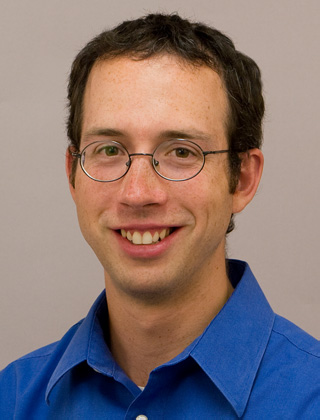
|
Brian Polagye Adjunct Investigator Assistant Professor, Mechanical Engineering bpolagye@apl.uw.edu Phone 206-543-7544 |
Research Interests
Tidal Energy Site and Device Characterization
Biosketch
Brian Polagye specializes in the characterization of tidal energy sites and devices through his work with the Northwest National Marine Renewable Energy Center. He works closely with Dr. Jim Thomson to develop instrumentation and methodologies to characterize the physical and biological environments at tidal energy sites. A combination of shipboard and stand-alone surveys monitor current velocity, turbulence, water quality, underwater noise, and marine mammal behavior. These activities are essential to the effective siting of tidal energy devices.
Videos
|
Connecting to the Ocean's Power: Marine Energy Research at APL-UW The U.S. Navy's support of the University of Washington, one of the nation's preeminent research universities, leverages APL-UW capabilities with university academic expertise to address a wide range of topics in marine energy through experimentation and evaluation in laboratory settings and field deployments of prototype systems. |
5 Jul 2023
|
|
Using a Wave Energy Converter for UUV Recharge This project demonstrates the interface required to operate, dock, and wirelessly charge an uncrewed underwater vehicle with a wave energy converter. |
More Info |
11 Apr 2022
|
|||||||
|
Uncrewed underwater vehicles (UUVs) predominantly use onboard batteries for energy, limiting mission duration based on the amount of stored energy that can be carried by the vehicle. Vehicle recharge requires recovery using costly, human-supported vessel operations. The ocean is full of untapped energy in the form of waves that, when converted to electrical energy by a wave energy converter (WEC), can be used locally to recharge UUVs without human intervention. In this project we designed and developed a coupled WEC-UUV system, with emphasis on the systems developed to interface the UUV to the WEC. |
|||||||||
|
Adaptable Monitoring Package — AMP The AMP shines new light on a complex challenge: monitoring the environment around marine energy conversion sites. AMP is an adaptable sensor package that can withstand the strong currents and waves typical of such environments. Its low-cost ROV deployment system, subsea docking station, and a wet-mate connection for power and data transfer make it a flexible solution for monitoring studies. |
4 Feb 2015
|
|
Publications |
2000-present and while at APL-UW |
Listening to the beat of new ocean technologies harvesting marine energy Hazel, J., C. Bassett, B. Polagye, K. Raghukumar, and C. Gunn, "Listening to the beat of new ocean technologies harvesting marine energy," Acoustics Today, 19, 23-31, doi:10.1121/AT.2023.19.4.23, 2023. |
More Info |
1 Dec 2023 |
|||||||
|
When we hear about offshore energy in the news media and other popular information sources, images of oil platforms and, more recently, wind farms flash across our screens. However, there is a new, rarely known sector of offshore energy under development that is focused on harnessing the renewable power contained in ocean waves and currents and converting it to electricity. These new technologies termed marine energy converters (MECs) are the topic of this article. They not only have the potential to make a significant contribution to our energy needs but may also generate new sources of anthropogenic sounds in the oceans that require measurement and characterization to ensure that there are no harmful effects to marine life. |
|||||||||
Connecting to the Ocean's Power: Marine Energy Research at APL-UW. Bassett, C., and B. Polagye, Editors. "Connecting to the Ocean's Power: Marine Energy Research at APL-UW." Technical Report, APL-UW TR 2301. Applied Physics Laboratory, University of Washington, Seattle. April 2023, 35 pp. |
5 Jul 2023 |
Experimental validation of float array tidal current measurements in Agate Pass, WA Harrison, T.W., N. Clemett, B. Polagye, and J. Thomson, "Experimental validation of float array tidal current measurements in Agate Pass, WA," J. Atmos. Ocean. Technol., 40, 475-489, doi:10.1175/JTECH-D-22-0034.1, 2023. |
More Info |
12 Jan 2023 |
|||||||
|
Tidal currents, particularly in narrow channels, can be challenging to characterize due to high current speeds (> 1 m s-1), strong spatial gradients, and relatively short synoptic windows. To assess tidal currents in Agate Pass, WA, we cross-evaluated data products from an array of acoustically-tracked underwater floats and from acoustic Doppler current profilers (ADCPs) in both station-keeping and drifting modes. While increasingly used in basin-scale science, underwater floats have seen limited use in coastal environments. This study presents the first application of a float array towards small-scale (< 1 km), high resolution (< 5 m) measurements of mean currents in energetic tidal channel and utilizes a new prototype float, the μFloat, designed specifically for sampling in dynamic coastal waters. We show that a float array (20 floats) can provide data with similar quality to ADCPs, with measurements of horizontal velocity differing by less than 10% of nominal velocity, except during periods of low flow (0.1 m s-1). Additionally, floats provided measurements of the three dimensional temperature field, demonstrating their unique ability to simultaneously resolve in situ properties that cannot be remotely observed. |
|||||||||
In The News
|
Oscilla Power, Univ. of Wash. and others share $25M federal grant to spur wave energy efforts GeekWire, Lisa Stiffler The UW, in partnership with Integral Consulting, will study the underwater noise being created by wave energy converters that are being tested at the PacWave South facility on the Oregon Coast. The information will be helpful to wave energy entrepreneurs and regulating agencies working to make sure the devices don’t harm marine life. |
27 Jan 2022
|
|
UW engineers test tidal energy turbines on Lake Washington KING5 News, Laura Fattaruso A team of engineers are testing turbines in Lake Washington that are designed to turn tides into usable energy. |
17 Aug 2019
|
|
Eyes Underwater Watching Aquatic Wildlife Environmental Monitor, Karla Lant Recent work from researchers at the University of Washington offers a promising new way to harvest energy from waves at sea and use that energy to power an Adaptable Monitoring Package. |
9 Jul 2019
|






